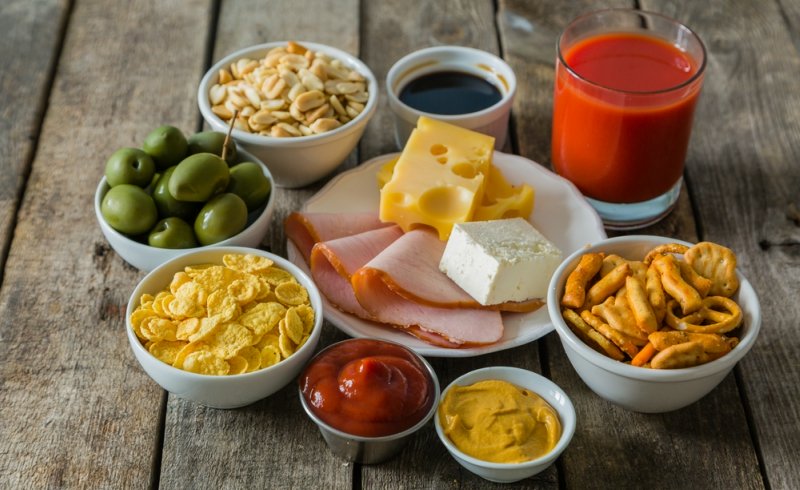
By Sierra Fawn Guay, MS, RDN, LDN
Disclaimer: This article is not meant to replace personalized medical advice. A high sodium diet may not be right for you.
Dysautonomia describes a set of conditions resulting from the malfunction of the autonomic nervous system. Postural orthostatic tachycardia syndrome (POTS) is a certain type of dysautonomia that is characterized by an exaggerated increase in heart rate that occurs or is exacerbated in the upright or standing positions. In order to help alleviate the symptoms associated with POTS, doctors often prescribe a high-sodium, high-fluid diet that is intended to help increase blood volume.
Sodium recommendations for people living with POTS may range from 3,000 to 10,000 mg per day. Though it is common to consume a high-sodium diet by eating processed foods (foods with a lot of added, unfamiliar ingredients) or fast foods, it is important to increase sodium intake without compromising overall health. Therefore, sodium should be consumed primarily through the intake of fresh foods in the context of a well-balanced diet.

The Adequate Intake (AI) of sodium for healthy people (set by the U.S. Food and Drug Administration or FDA) is 1,500 mg per day. To put that number into perspective, one teaspoon of table salt contains 2,300 mg of sodium.
Consuming 10,000 mg of sodium per day may seem like a daunting task, especially for people who are not used to a high-sodium diet. Preference for sodium is acquired, which means that one can increase his or her preference for salty foods by gradually increasing sodium intake. It can be helpful to eat small, frequent meals to better spread sodium intake throughout the day.
Most table salt (which is a combination of sodium and chloride) contains iodine, an essential nutrient. In order to avoid excessive iodine intake in a high-sodium diet, it is advisable to use iodized salt with meals and non-iodized salt with cooking.
Recommended daily fluid intake for people living with POTS is often about two liters per day. It is essential to consume adequate fluid when consuming a high-sodium diet in order to maintain good hydration status. Water is always a good choice. It may be helpful to consume rehydration fluids or sports drinks that contain sodium, provided that these drinks are not high in added sugars.
Many foods are naturally high in sodium and are easy to include in a healthy diet. Some of these foods are: pickles, olives, cheese, soy sauce, salted nuts, and more!
Potato Pickle Salad
Makes three servings. Sodium per serving: about 2,250 mg.
Ingredients:
3 tbsp. salted butter
1 medium onion, sliced
½ lbs. potatoes, washed and diced
1 cup cottage cheese
3 tbsp. Dijon mustard
1 tbsp. garlic, minced
½ cup dill pickles, diced
¼ cup fresh parsley, chopped
1 tbsp. caraway seeds (optional)
2 tsp. salt
black pepper to taste
Instructions
Melt butter in sauté pan over medium-high heat. Add onions to pan. Cook for three minutes, then reduce heat to medium. Cook until caramelized, about 25 minutes.
- Bring water to boil in a medium pot. Add potatoes. Cook until fork tender, about ten minutes.
- Add cottage cheese, mustard, and garlic to a food processor. Process until smooth, about one minute.
- Mix all ingredients together. Enjoy!
Serving suggestion: Use salad as a filling for sandwiches. Add a handful of spinach for added flavor and nutrients.
—
Previously published on Thebrainhealthmagazine.com.
—
***
If you believe in the work we are doing here at The Good Men Project and want to join our calls on a regular basis, please join us as a Premium Member, today.
All Premium Members get to view The Good Men Project with NO ADS.
Need more info? A complete list of benefits is here.
—
Photo credit: shutterstock.com

